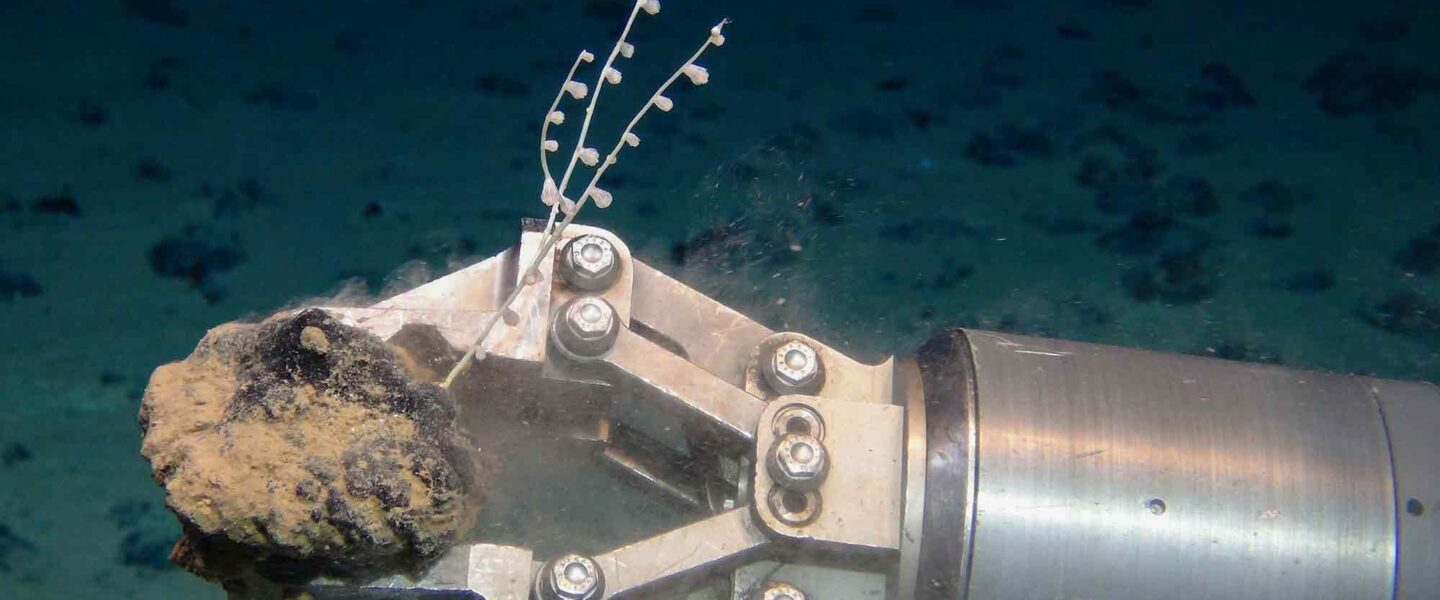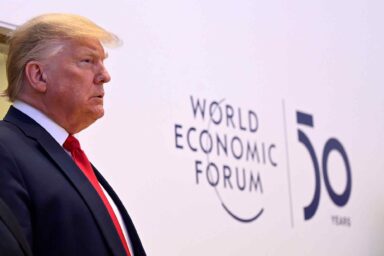The US military is a major interest in this new extractive industry, which is poised to emerge both off- and on-shore.
|
Listen To This Story
|
Along the industry-laden Gulf Coast, a new type of extractive industry is taking shape. Two deep-sea mining companies recently applied for US permits to mine minerals from the seabed, both in US waters and beyond them. If they get what they seek, they’ll need places to process, refine, and store those minerals. The Gulf Coast, especially the greater Houston area and Louisiana, are attractive for their deepwater ports, skilled industrial workforce, and existing infrastructure that could be used for deep-sea mining activities. An April executive order from President Donald Trump — informed at least in part by these same mining interests — aims to fast-track these efforts at every stage, from finding and mining the minerals to selling them.
While the industry’s momentum builds, deep-sea mining’s environmental risks remain unclear: the ecosystems haven’t been well-researched, and it’s hard to make predictions based on small-scale mining tests done so far. It would affect oceans already struggling with pollution, acidification, and a host of other human-caused issues. The prospect has sparked protests and pushback from communities worried about risks like harm to fisheries and underwater cultural sites. Mining company officials are optimistic that those risks can be reduced or avoided, but some harm will be unavoidable.
“The place where they actually physically mine, I would not expect to see recovery happening within human lifetimes,” said Andrew Thaler, an ecologist specializing in deep-sea environments.
Deep-sea mining hasn’t yet been done on a commercial scale, but it’s not a new idea. If you take a boat some 80 miles off the southeast Atlantic coast, you’ll sit above the world’s largest known deepwater coral reef, a global biodiversity hotspot. There, on a submerged plateau, rolling hills of naturally-white coral cover millions of acres. This plateau was also the site of the world’s first deep-sea mining test in the 1970s, long before the reef’s discovery. The test proved that rocky mineral formations could be hauled from the depths.
The US pursuit of seabed minerals slowed after that, but never fully died out. Trump revitalized this long-simmering interest with his executive order. With an industry-friendly administration, the coming years could see deep-sea mining leap from idea to reality in the open ocean, in US waters, and at onshore processing plants.
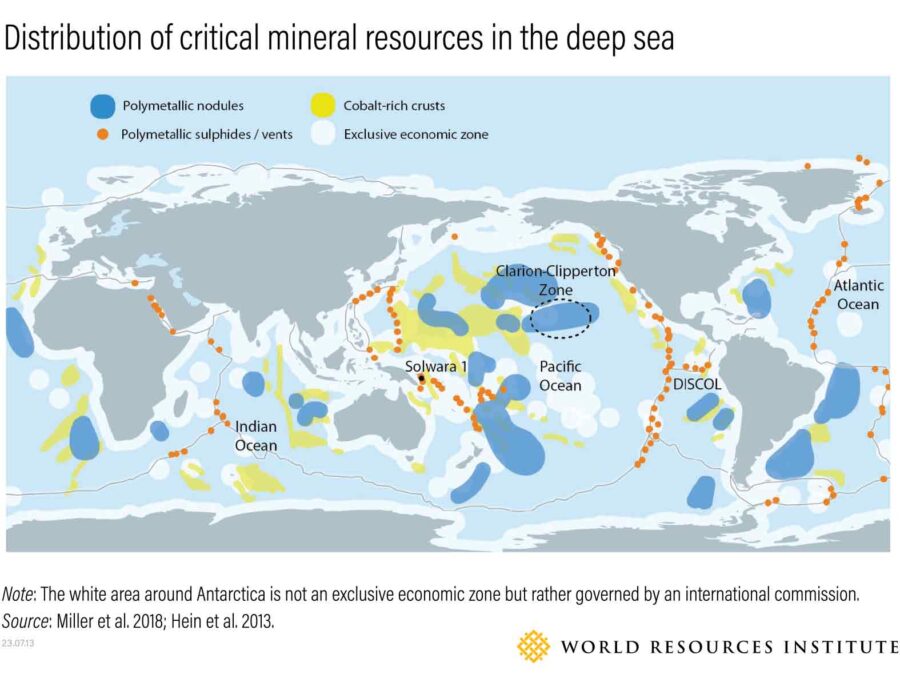
Perhaps most notably, the order directs two US agencies to create a faster permitting process for deep-sea mining. The Bureau of Ocean Energy Management (BOEM), part of the Department of the Interior (DOI), can permit mining on the US seabed. The National Oceanic and Atmospheric Administration (NOAA), more controversially, can permit US mining on the international seabed.
The US never agreed to international seabed governance, and its law allows for unilateral deep-sea mining. However, this would go against the International Seabed Authority, a UN-affiliated organization that oversees mining under the high seas, with 169 countries plus the European Union as members. According to this international body, which the US is not a member of, US mining in the open ocean would be illegal.
With legal challenges and administrative hurdles looming, nothing in the executive order is guaranteed. “The thing with all executive orders is executive orders really just say what the priorities of the administration are,” said Thaler, a researcher who follows deep-sea policy closely. But in late June, the DOI announced policy changes to fast-track domestic deep-sea mining as the order calls for, including “minimizing unnecessary paperwork and compliance steps.” The order’s priorities also reach beyond the seabed, with potential onshore impacts.
“We’ve been working a little bit to influence the executive order,” Oliver Gunasekara, CEO and co-founder of Impossible Metals, a US deep-sea mining company, told Deceleration. “It was important to us that it would cover domestic as well as international [mining].”
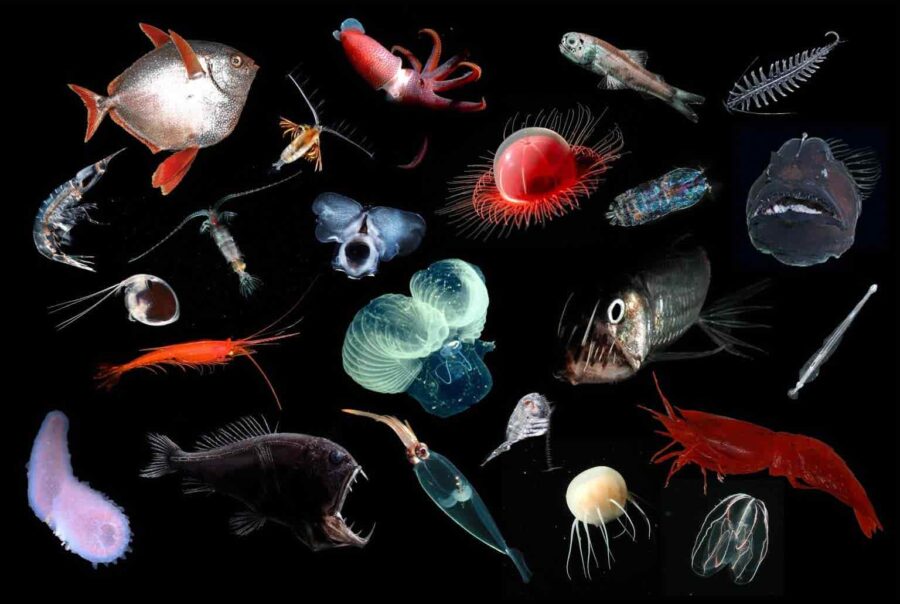
Photo credit: E. Goetze, K. Peijnenburg, D. Perrine, Hawaii Seafood Council (B. Takenaka, J. Kaneko), S. Haddock, J. Drazen, B. Robison, DEEPEND (Danté Fenolio), and MBARI. See the World Register of Deep-Sea Species for more.
Another brand, The Metals Company (TMC), has applied for US permits for international deep-sea mining. Other countries are already denouncing the prospect. Given this emerging pushback, moving forward could be a challenge. But Impossible Metals seeks permission for domestic mining, a more straightforward goal. It’s applied for a permit “for exploration and potential mining” around American Samoa.
While other deep-sea mining companies have tracked robotic “crawlers” to suck up minerals, Impossible Metals has a unique design, which it states is safer for the environment. Its robots hover above the seafloor to reduce environmental disturbance, and use many arms to pluck mineral-rich rocks, with AI-enabled cameras to help avoid visible life such as corals.
But there’s more to deep-sea mining than collecting seafloor rocks. Those rocks would need to be processed into components, like cobalt and nickel, which can be used in industrial applications like steelmaking, as well as renewable energy products like electric car batteries and solar panels.
“Right now, there clearly isn’t any mineral processing in the States, and that’s a problem,” Gunasekara said. The executive order, however, calls for “streamlined permitting” not just for exploring and mining seabed minerals, but also for processing them.
It requests several reports on domestic processing, including identifying private-sector possibilities, and exploring government financing like grants and loans.
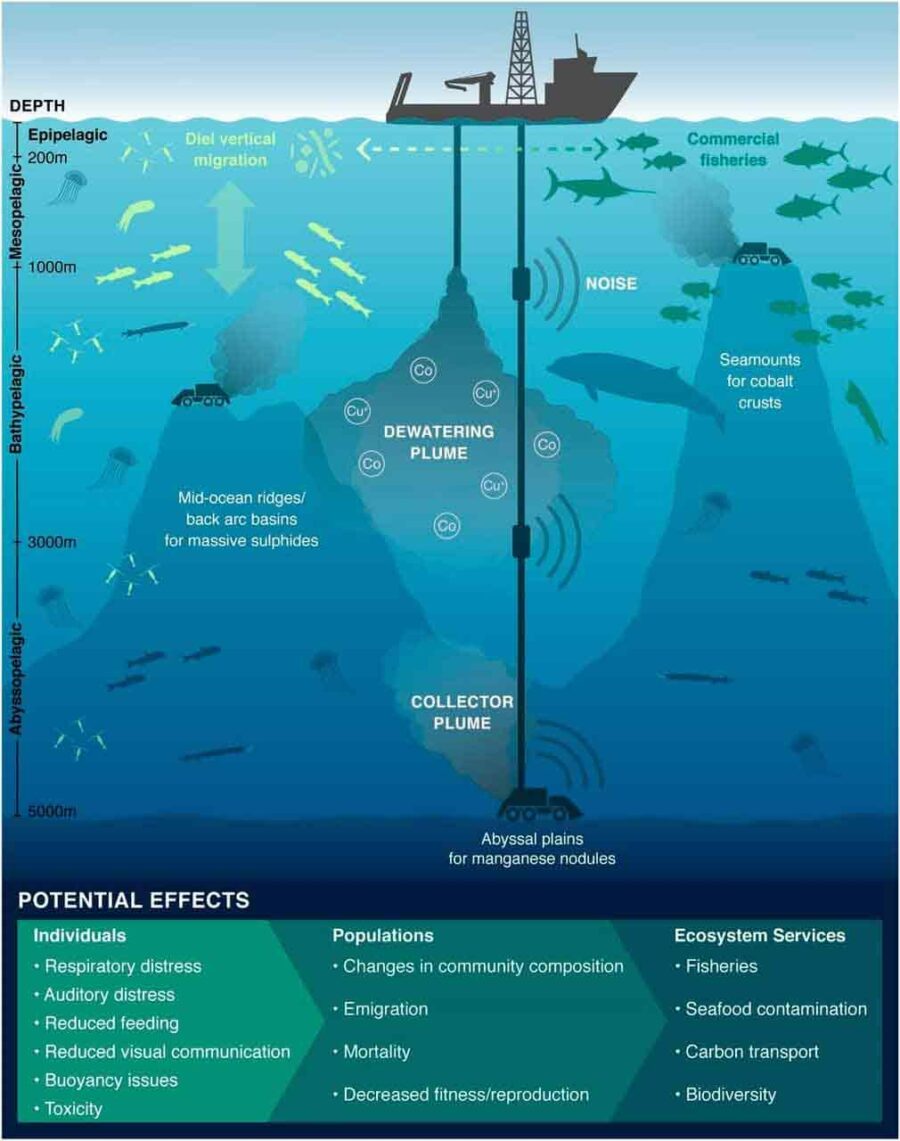
Photo credit: IUCN
Impossible Metals hopes for a processing location with access to reliable energy, deepwater ports, and proximity to potential buyers, Gunasekara said. The company plans to process minerals in other countries for now. But, Gunasekara added, the plan is ultimately to “build bespoke processing plants in the US.”
TMC, the other mining company seeking US permits, currently works with a processing partner in Japan. However, it’s shown interest in building a Houston-area processing plant. Unless granted an exemption, its US permits would require domestic processing. A recent company report on its emerging plans includes a map with a services hub in California and processing plants along the Gulf Coast.
TMC’s offshore technology partner, Swiss brand Allseas, already has a Houston office. Deep Reach Technology, which has assisted deep-sea mining research for decades, is headquartered nearby in Stafford, TX. Ocean Minerals, a spin-off company from Deep Reach Technology, has its office in Houston.
Even without processing facilities, deep-sea miners may have a major US buyer. The executive order also requests a report on adding seabed minerals to the National Defense Stockpile: the government’s stash of materials for military and industrial uses.
The order doesn’t say much to address environmental concerns. According to Thaler, scientists’ lack of knowledge about the deep is a major issue for deep-sea mining. Both TMC and Impossible Metals aim to mine flat seafloor plains, where metallic rocks form from dissolved minerals. Historically, these flat areas haven’t been popular for research. Scientists have largely studied major features, like hydrothermal vents and deepwater canyons. This makes the ecological impacts of mining the abyssal plains hard to predict.
Impossible Metals aims to build and test its first full-scale mining robot in 2026, then build a fleet of them in 2027, while prepping transport ships. According to records released for this story to the author, BOEM has provided Impossible Metals with input on draft applications, equipment designs, and even recommended relevant conferences at which to present. Impossible Metals established its BOEM connections during the Biden administration, the records show. But it’s Trump’s executive order that may provide fuel for the next steps.
Those steps won’t be easy, though. Prepping for commercial mining means finding and measuring mineral deposits, surveying environments, refining equipment, and scaling up capacity — all while working in the remote, pitch-dark, high-pressure depths.
Public Comment Opportunity
Even with the Trump administration’s fast-tracking efforts, there are also regulatory steps ahead. Public comments are being accepted until July 16 concerning Impossible Metals’ proposal to mine an area offshore American Samoa (comments and supporting files can be uploaded here). TMC will also have a public comment period, if its application with NOAA moves forward.
To add to the complexity, Impossible Metals and TMC face resistance from within the US and internationally. American Samoa currently has a deep-sea mining moratorium for its territorial waters. That moratorium doesn’t cover the federal waters where mining would happen, which lie outside the territorial area. However, it indicates local resistance that could be hard to overcome, and might put American Samoa’s ports, infrastructure, and workforce off-limits.
TMC’s challenges are bigger. So far, 37 countries support a moratorium on international deep-sea mining. However, even countries actively pursuing deep-sea mining oppose the US.doing it independently in shared global oceans. TMC might find its international partnerships hard to maintain, whether they’re dissolved by choice or by law.
The Trump administration claims this new industry could add $300 billion, plus 100,000 new jobs, to the US in the next decade. But deep-sea mining is an inherently slow prospect and one executive order can’t change that. “No one is going to be mining the deep ocean in 2025,” Thaler said. “A lot of people are going to be trying to get permission to move forward.”
This story by Elyse Hauser was originally published by Deceleration and is part of Covering Climate Now, a global journalism collaboration strengthening coverage of the climate story. WhoWhatWhy has been a partner in Covering Climate Now since its inception in 2019.

